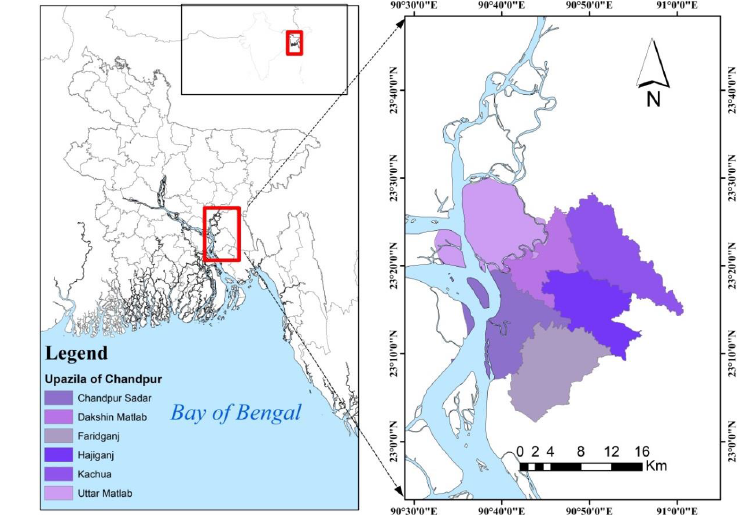Traditional jute (Corchorus spp.) retting process: A significant threat to fish health and fish biodiversity in Chandpur District, Bangladesh
DOI:
https://doi.org/10.17762/sfs.v8i2.52Keywords:
Aquaculture, Fish biodiversity, Fish health, Jute retting, Water quality, Environmental pollution, TraditionalAbstract
The study was conducted to assess the impact of traditional jute retting process on the fish health and fish biodiversity in the six upazilas of Chandpur district, Bangladesh. Data were collected from respondents through face to face interviews and focus group discussions. All of the jute farmers in the study area used traditional water retting methods to extract fibres and these methods were entirely dependent on natural water bodies such as pond, canal and beel. Most of the jute farmers (72%) used canal’s water for jute retting and farmers (76%) revealed that the highest intensity of fish mortality occurred in those canal water. Almost 30% of people mentioned water condition has deteriorated due to jute retting which is indicated by the presence of surface scum, bad odour etc. in the jute retting water bodies and 50% partially believed that jute retting causes the water quality deterioration but only in the case of closed water bodies. About 62% of people stated the availability of SIS (Small Indigenous Species) such as Channa punctatus, Anabas testudineus, Channa striatus, Heteropneustes fossilis, Clarias batrachus, Mystus spp., Puntius spp. gradually decreased in the jute retting water bodies after the jute retting. Nowadays fish farmers (78%) didn’t practice aquaculture in the jute retting water bodies because they found it unprofitable due to the deteriorated water condition. After the jute retting season, the fishes especially carps such as Labeo rohita, Gibeleon catla, Cirrhinus cirrhosis, Hypophthalmichthys nobilis and SIS cultured in jute retting water bodies were affected by diseases and different signs such as skin lesion, ulcers, gill hemorrhage etc. were observed in the affected fishes and most of the fish farmers used lime, potash etc. for treatment of the fish diseases. Jute and fish both are valuable crops in the perspective of Bangladesh due to the contribution of these crops in total national export earnings and in the employment sector. Therefore, an environmentally friendly jute retting process should be extended among the jute farmers of Bangladesh which will not be a threat for fish health and fish biodiversity.










